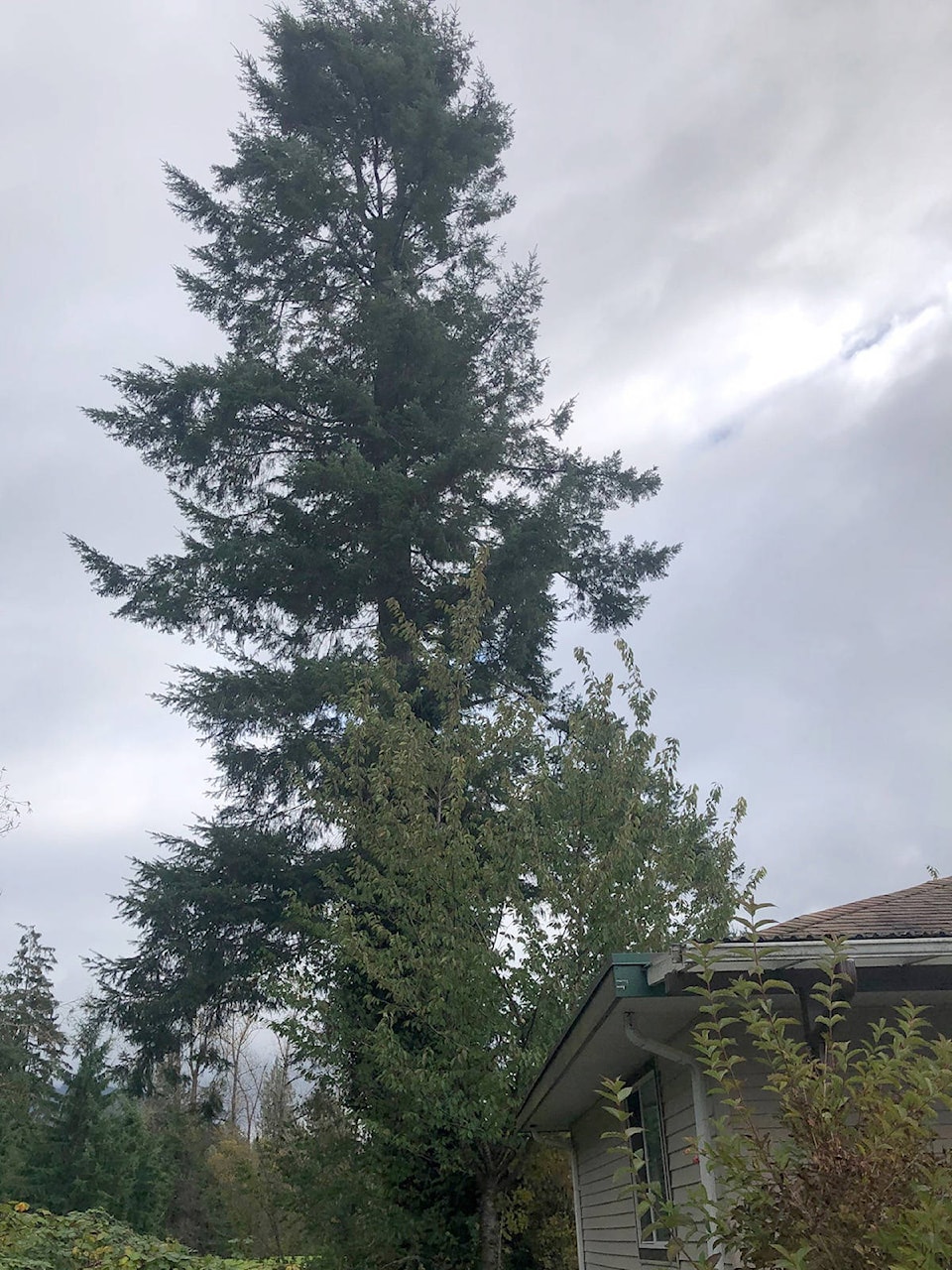The District of Mission wants to add teeth to its tree-management bylaw to prevent developers from clear cutting land prior to submitting a development application, but rural residents say a canopy of new rules will end up crashing on them.
The current bylaw was enacted in 2006 and there are no records of it ever being enforced, according to the first draft of the bylaw presented to council on Sept. 8 – leading to developers taking advantage.
“We’re getting in step with the other 14 communities,” said councillor Daniel Plecas. “I was on a street not to long ago … and saw [clear cutting], which was really disappointing for me.”
Mission is one of three municipalities out of 17 in the Lower Mainland without an effective tree management bylaw, the draft says. The lax rules create risks to the community’s biodiversity and animal habitats, infestations of invasive plants species, windfall hazards and increased erosion of sloping lands.
But the new rules need a more distinction between big developers and smaller property owners, according to Colleen Beland, acting secretary of the Stave Falls Garden Association.
“We’re extremely unique in the diversity of the properties that we have in this community,” Beland said. “It’s not the rural property owners that are the issue.”
In recent years, several large parcels of land have been stripped by developers prior to the submission of development applications, cutting their costs for planting replacement trees.
From a developers perspective, the draft says, less trees make densification easier, provide flexibility for sub-division layouts and reduce potential liabilities from falling trees.
While the current rules do include fines for removal offences, enforcement is “very difficult” to catch, requires proceeding through court and has no cost-recovery mechanism, according to the draft.
Likewise, tree-retention and replanting rules only apply to certain development applications and “provide little incentive for a developer to keep significant trees on the property.”
Under the new rules, tree-removal permits would have to accompany a site plan, and where applicable, qualified professionals must submit arborist, geotechnical, fire interface, and erosion control reports prior to tree removals.
A more stringent tree-replacement rule would also be enforced to make sure of proper species, planting, protection and replacement ratios.
Protection will be given to environmentally sensitive areas, such as land adjacent to rivers and streams, and on land slopes with an incline greater than 30 per cent to prevent erosion.
More tree types would also be categorized as “protected.” Significant trees and heritage trees over a certain diameter, specific species, replacement trees and trees protected under the BC Wildlife act would all require a permit before being cut.
Bylaw officers would have the ability to hand out tickets, instead of having to proceed through court and residents would be able to identify permitted cuts through online mapping.
Tree-removal applications will be free for a single protected tree per quarter acre over a 12 month period, and $50 for each additional tree. A refundable security deposit of $500 per tree will be held by the district for a year to ensure replacement trees are planted.
The district hopes to hire one additional full-time staff member, pay arborist contractors, and create a funding reserve for tree canopy assessments which will be conducted every five years, for a total annual cost of $148,000. It’s estimated that $20,000 will be recouped every year from fees and penalties related to the bylaw.
Many in Mission’s rural communities are worried the bylaw’s focus on developers, ignores the difficulties of property owners living in heavily-forested areas.
Beland started an online petition to halt the bylaw, which has gained 1,200 signatures from the Stave Falls and Steelhead community associations.
“It’s pretty invasive when you look at the amount of reporting that needs to be done,” she said. “Even a tree that comes down in a windstorm and is a danger to your property, requires this process.”
Beland is currently trying to sub-divide her seven acre property into three parcels, which will require the removal of 100 Hemlock trees. She said the trees have already become diseased from an invasive species of insect.
The security deposits, the permit applications and now, the various arborist reports, add an unaffordable cost to her project, she said.
Another issue is the bylaw contradicting Mission’s Community Wildfire Protection Plan, according to Candace Koch, chair of the Steelhead Community Association.
The protection plan recommends removing the number of trees in heavily-wooded areas, removing dying trees and pruning and maintaining trees within 30 feet of the home – all which would require permits under the new bylaw.
Steelhead became designated a “fire-smart” community in 2017, Koch said.
“Eight-inch trees in areas like Steelhead and Stave Falls are weeds to be honest. The amount of scrub that we have is insane when you’re trying to maintain like five, 10, 20 acres – it’s very cumbersome.”
An online consultation with the public was held from Sept. 15 to Oct. 15, allowing residents to voice their concerns. Those concerns will be reviewed by council on Nov. 16.
[CORRECTION: The Nov. 12 print version of this article stated a security deposit of $250 per tree would be held by the district until a replacement tree was planted. In fact, the security deposit is $500.]
